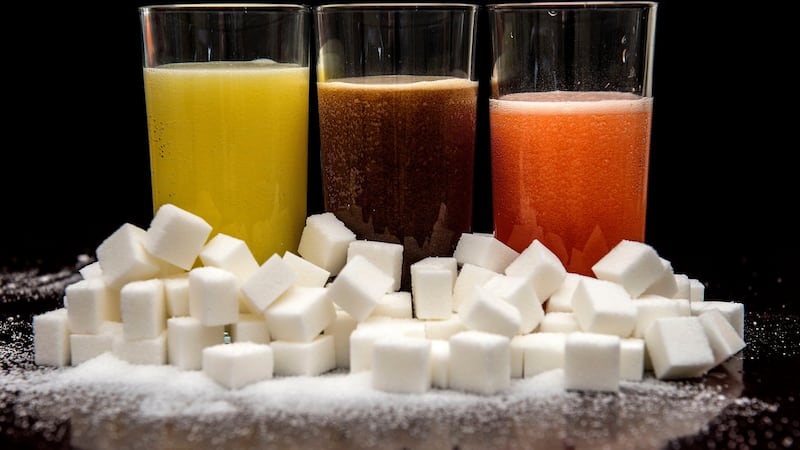Research published widely last year has suggested that excessive sugar consumption affects the brain in a similar way to cocaine, by elevating dopamine levels that control the brain’s reward and pleasure centres.
The study, from Queensland University of Technology, found that long-term consumption of sugar will eventually cause a reduction in dopamine levels, with people having to consume higher and higher levels of sugar in order to reach the same reward levels and avoid mild states of depression.
This research follows on from the famous 2008 Princeton study which suggested that sugar could be an addictive substance. and were shown to exhibit craving, withdrawal and relapse behaviours, all typical of addiction.

However, the jury among the scientific community is still very much out on whether sugar is an addictive substance, with other studies showing no evidence that people could become addicted to sugar or other food substances.
Sugar creep
Whatever the truth, we know that a diet too high in sugar wreaks havoc on health and wellbeing, yet as nutritional therapist Elsa Jones, author of Goodbye Sugar, points out, many people feel powerless when it comes to sugar cravings. Over the past few decades sugar has crept into all areas of daily diet, from the sweet treats as a reward to family essentials such as yoghurt, soup and cereal.
While the World Health Organisation currently recommends a sugar intake to no more than six spoonfuls a day – about 25 grams – Jones says the average person consumes more than 20 teaspoons per day, most of which is done unknowingly via everyday foods that have had sugar added to them.
“At least two-thirds of my clients tell me they experience strong and persistent cravings for sweet foods on a daily basis. In fact, most say they feel ‘addicted’ to sugar and cite sugar cravings as their biggest obstacle to losing weight and keeping it off. I’d have to agree. Not only does sugar prevent you from maintaining your ideal weight, it also zaps your energy and mood and keeps you trapped in a cycle of wanting more and more.”
It's what you reward yourself with after a hard day's work
However as Jones points out, it’s not just the physical cravings that keep us hooked to sweet foods.
“Chances are, you have some strong emotional ties that need to be addressed too. Your attachment to sugar is likely to be deeply ingrained in your day-to-day routine and social practices. It’s what you reward yourself with after a hard day’s work, how you celebrate occasions, soothe away negative emotions and how you treat yourself at the weekend. Most of us fall into a sugar habit over time without even realising it. It’s an easy habit to make, but a difficult one to break,” she remarks.
In her consultation work with clients and in her book, Jones combines nutritional advice with cognitive behavioural therapy coaching techniques to help her clients identify and address the psychological and emotional factors behind their eating patterns.
She explains there are two types of people, those who can cut down on sugar and be satisfied with one biscuit or two squares of chocolate, and those who struggle with any kind of sugar in their diet and for whom one biscuit turns into a whole pack.
“Some people need to go cold turkey and eliminate sugar totally from their diet but the majority of people can cut down and have a low-sugar diet, which is what I advocate. You need to start by identifying and reducing the biggest sources of sugar in your diet, which is usually sweet treats like chocolate, biscuits, ice-cream and soft drinks. Within about a week of reducing your sugar intake, you will notice a difference in cravings and energy levels.”
Getting the balance right
One of the easiest ways to cut down on your sugar intake is simply not to have it in the house, says Jones, who keeps very little sweet food in her own house. As your choice of breakfast sets the stage for your blood sugar levels for the day, she advises opting for porridge topped with berries, nuts and seeds, or eggs and a slice of oat bread or rye toast.
She is an advocate of the Harvard School of Public Nutrition Healthy Eating Plate, pointing out that getting the balance of nutrients right at meal times, will help keep your blood sugar levels steady and reduce cravings. The recommendations are that one quarter of the plate should be protein-rich food, such as eggs, fish, poultry, nuts/seeds, beans or lentils; one quarter complex carbohydrates, such as brown rice, oats or quinoa and the remaining half should consist of vegetables and fruit.
Jones advises always keeping healthy snacks close at hand so that you don’t get too hungry and end up snacking on sugar and caffeine.
“When it comes to snacks, eat little and often. A handful of nuts, a piece of fruit and natural yoghurt, nut butter spread on a slice or apple or an oat cake or raw pepper dipped in hummus. Bring your snacks with you in a small container so you always have something healthy close to hand.”

Clinical hypnotherapist Fiona Brennan agrees that sugar is a big contributor to weight gain for many of the clients who come to her, and the biggest hurdle to losing weight.
“When we eat sugar, it activates the brain’s reward system which causes dopamine to be released very quickly, but the more we eat, the more we need. So many people struggle with shame and guilt, hiding wrappers from partners and children. This makes them eat even more sugar which is like putting fuel to the fire of anxiety and depression. Even though they know they will feel awful afterwards, they feel totally helpless against the overwhelming power of their cravings.”
The goal is not weight loss, she says, but in increasing energy levels
Using a compassionate approach, Brennan tries to help her clients stop beating themselves up and to take away this sense of shame and self loathing by looking at the roots of their eating habits and sugar addiction. The goal is not weight loss, she says, but in increasing energy levels and improving self esteem and overall mood, which usually leads to weight loss.
Elsa Jones’s oats-so-healthy brown bread
This bread is free from wheat flour and yeast, which is great for anyone who is sensitive to or bloats from eating standard bread. Oats are high in a type of fibre called betaglucan, which helps to lower cholesterol and improve blood sugar control. This bread is moist and delicious, and really quick and easy to make.
Makes one loaf.
Ingredients
300g oats
2 tablespoons sesame seeds
2 teaspoons bread soda
Pinch of salt
500g whole milk natural yoghurt (not low fat)
Variations
There are lots of things you can add to this recipe including cinnamon, mixed spice, mixed seeds or nuts, black olives or rosemary.
Method
Preheat the oven to 175 C. Grease a 1lb loaf tin.
Place the oats, seeds, bread soda and a pinch of salt into a large bowl. Pour over the yoghurt and mix the ingredients together really well. Pour the mixture evenly into the greased tin. The mixture should take up three-quarters of the volume of the tin. Smooth the top with the back of a spoon to ensure it’s nice and even.
Bake in the oven for approximately 50 minutes. Use a skewer to check it’s cooked through. If you feel it’s going quite brown on top, just cover it loosely with tin foil for the last 10 minutes.
Once baked, let it cool in the tin for at least 10 minutes, then remove to a wire rack to cool completely.
See Elsa Jones's website elsajonesnutrition.ie for healthy food and nutritional advice. 'GoodBye Sugar' is in book stores and on Amazon. Her recipes are simple and practical and particularly suited to the Irish diet.
Fiona Brennan and Elsa Jones are holding two upcoming Love Yourself Slim workshops aimed at changing your mindset for weight-loss success on Saturday, September 30th and Saturday, October 7th, 2017. Details available from www.thepositivehabit.com










